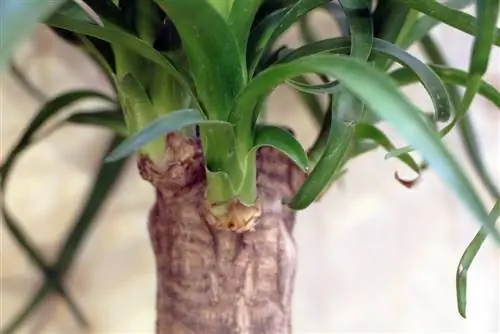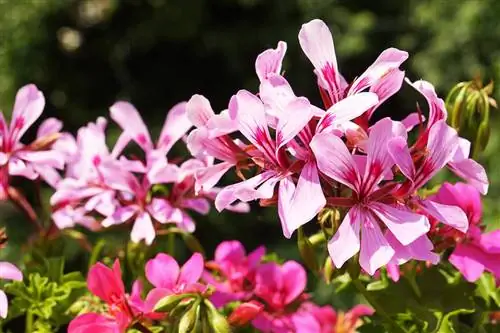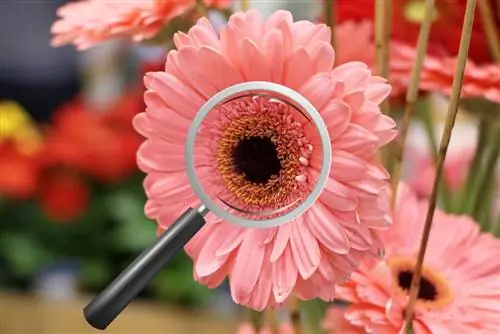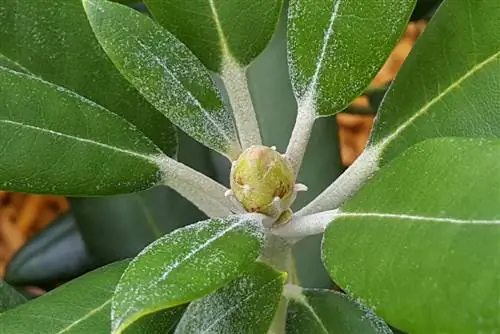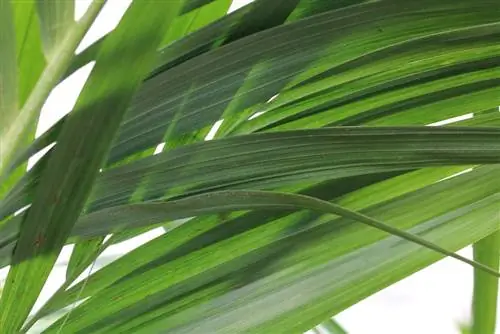- Author admin [email protected].
- Public 2023-12-17 03:39.
- Last modified 2025-01-24 12:45.
As a rule, most plants that grow in barren locations in the wild are considered robust. In addition, a thick trunk and leathery, firm leaves are often a good indicator of robust plants. This is because they store the collected water in the trunk and leaves so that they can survive long dry periods. These plants are often thick-leaved plants, climbing plants or cacti. These plant varieties are particularly popular among beginners because the care required is comparatively low and they are also forgiving of any care mistakes.
birch fig
The birch fig originally comes from the subtropical and tropical areas of East Asia, Oceania and Australia. They are available in numerous different varieties, ranging from small to large-leaved and from short to tall growth. What all species have in common, however, is the dense, lush foliage. It should be placed in a bright location, especially since it prefers a temperature of around 18 to 25 degrees and relatively high humidity. When it comes to choosing the substrate, however, it is not particularly demanding, as a commercially available compost-based potting soil is completely sufficient. The birch fig does not place any great demands on care either: although it should be watered regularly, frequent fertilization can be avoided. The birch fig also has the following characteristics:
- Latin name: Ficus benjamina
- Synonyms: Benjamini, small-leaved rubber tree
- Genus: Mulberry Family (Moraceae)
- Growth height: 2 to 5 meters
- Growth habit: upright, spreading
- Special features: slightly toxic to humans and pets
Tip:
If the birch fig sheds its leaves to a large extent, this may be due to care errors. These include, for example, too much draft or irrigation water or air that is too dry.
Dragon Tree

Although the name of this popular plant suggests that it is a tree, the dragon tree actually belongs to the asparagus family. In the wild it grows almost exclusively in Africa and Asia, with the oldest specimen having an impressive height of around seven meters and can be admired in the north-west of Tenerife. In the living room at home, it is preferably used in a commercially available compost-based potting soil and placed in a bright location. Although it can tolerate some sunlight, it should under no circumstances be left in the blazing midday sun. Care includes plenty of watering because the root balls should always be kept moist. It is also advisable to fertilize the dragon tree with a complete fertilizer about every two weeks. The following characteristics are attributed to this exotic houseplant:
- Latin name: Dracaena
- Synonyms: dragon palm, dragon lily
- Genus: Asparagus (Asparagaceae)
- Growth height: up to 2 meters
- Growth habit: tree-like
- Special features: is considered poisonous, dogs and cats in particular are considered sensitive
Tip:
So that the leaves develop a beautiful, strong green, the dragon tree should be sprayed with lukewarm, soft water every now and then.
Echeveria
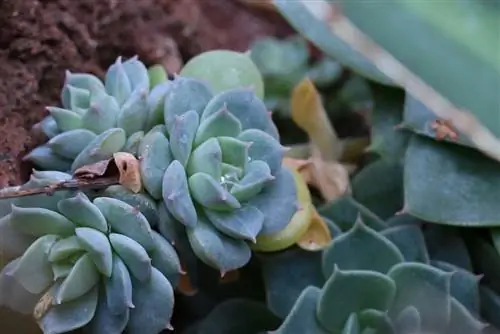
The Echeveria originally comes from Mexico and is one of the particularly decorative houseplants. This is due on the one hand to their mostly striped leaves, which are arranged in rosettes, and on the other hand to their bell-shaped flowers. In order for the Echeveria to develop its full splendor, it should be placed in a bright location all year round, with a south-facing window promising the optimal conditions. When choosing the substrate, a mixture of nutrient-poor soil and mineral components has proven successful. The Echeveria does not have a high nutrient requirement, which is why it is sufficient to fertilize it with a cactus fertilizer about every four weeks. When watering moderately, it is important to ensure that the leaves are not moistened. The Echeveria also has the following characteristics:
- Latin name: Echeveria DC
- Synonyms: Olive Ranthus Rose, Urbinia, Oliverella Rose
- Genus: Crassulaceae
- Growth height: 5-25 cm
- Growth habit: bushy to low-lying stemless perennials
- Special features: some species have finely hairy leaves
Tip:
Depending on the variety, Echeveria is considered slightly poisonous, which is why caution is advised, especially with broken leaves and possible skin contact.
Efeutute
The natural distribution area of the ivy is in the tropical and subtropical areas of Australia and Asia. Their large, heart-shaped leaves are not only a visual eye-catcher, but also an indicator of the ideal location. The following applies to the ivy plant: the more noticeable the marbling of the leaves is, the lighter it should be placed. The houseplant thrives best in loose, medium-coarse soil that offers a sufficient amount of nutrients. The care required for the pretty plant is low because it should only be watered moderately and fertilized about every two to three weeks. The ivy is known for cleaning the air of pollutants and also has the following properties:
- Latin name: Epipremnum
- Synonyms: gold vine, tonga plant
- Genus: Arum family (Araceae)
- Growth height: up to 2 meters
- Growth habit: climbing plant with running roots
- Special features: is considered a lucky plant that is said to bring its owner luck and we alth
Tip:
If the leaves of the ivy are wilting, this may be due to too strong a draft.
Elephant foot
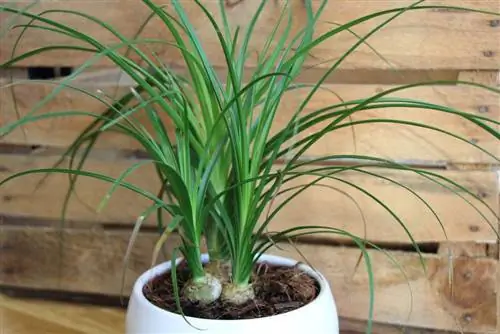
The elephant foot is related to the yucca and comes from Mexico.the south of the USA. Its appearance impresses with its rounded, swollen trunk and its delicate, narrow leaves, which can reach a length of up to one meter. It is considered a very slow growing plant, but with appropriate care it can live extremely long. The elephant's foot prefers a bright location all year round and can be planted in standard compost-based soil. During the growth phase it should be fertilized and watered moderately about every three to four weeks. The elephant tree also has the following properties:
- Latin name: Beaucarnea recurvata
- Synonyms: bottle tree, elephant tree, water palm
- Genus: Asparagus
- Growth height: 500-300 cm
- Growth habit: tree-like
- Special features: lives up to 100 years in nature
Tip:
If you have pets, you should avoid the elephant's foot as much as possible, as it is poisonous.
window leaf
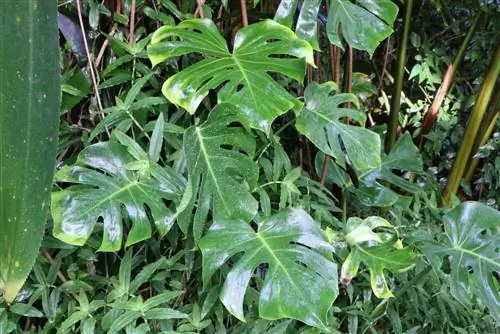
The window leaf originally comes from the tropical forests of Central and South America. The plant owes its name to its unusual leaves, which have window-like openings. These are about 50 centimeters long and shield-shaped and change their color over time. The foliage of this plant is initially light green and then turns dark green. Some older specimens also form a flower spadix, which is surrounded by a white bract. This can produce purple, edible berries, but they should not be consumed. The fruits contain the substance calcium oxalate needles, which irritates the throat mucosa. The window leaf prefers a bright, but not full sun, location and sufficient space. The plant should be watered regularly, but not too much. Applying fertilizer every two weeks is ideal. The window leaf has the following features:
- Latin name: Monstera deliciosa
- Synonyms: Philodendron
- Genus: Arum family (Araceae)
- Growth height: 2.5 meters and higher
- Growth habit: upright
- Special features: Leaves wind like lianas up tree trunks
Tip:
So that the window leaf grows properly, it is recommended to use a trellis or support in the pot.
maidenhair fern
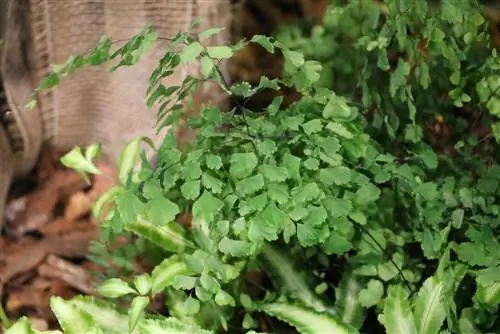
The lady fern owes its name to the appearance of its petioles, which resemble human hair. When choosing a location, you should choose a place that offers sufficient light, but no direct sunlight or drafts. The care required for this houseplant is extremely low as it has very low nutrient requirements and fertilizing every four to six weeks is sufficient. The maidenhair fern should be watered moderately, making sure the soil dries between waterings. It thrives best in a soil mix with a slightly acidic pH value and is ideal as a decorative hanging plant. The maidenhair fern also has the following characteristics:
- Latin name: Adiantum capillus-veneris
- Synonyms: Venus hair
- Genus: Fringe fern family (Pteridaceae)
- Growth height: about 50 cm
- Growth habit: bushy, overhanging
- Special features: is considered a medicinal plant (e.g. angina and bronchitis)
Tip:
The maidenhair fern is particularly suitable for rooms with high humidity, such as the kitchen or bathroom.
Money Tree
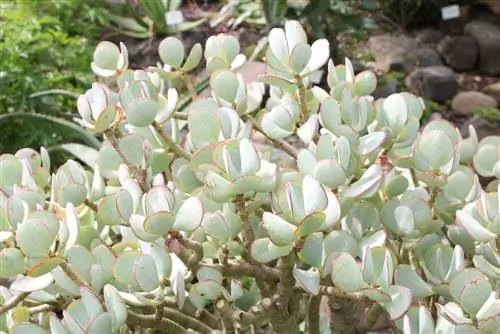
The money tree comes from South Africa and belongs to the thick-leaf family. It grows like a bush and forms many oval, round and thick leaves, which have succulent (water-storing) properties. The care required for this popular houseplant is low because, on the one hand, it only needs to be watered moderately and, on the other hand, fertilizing is not absolutely necessary. The money tree prefers a very bright location with full sunlight and also has the following properties:
- Latin name: Crassula ovata
- Synonyms: penny tree, Judas tree, thick leaf, German oak
- Genus: Crassulaceae
- Growth height: up to 2 meters
- Growth habit: shrub-like
- Special features: a new plant can be grown from every single leaf
Tip:
The temperature difference between summer and winter must be significant in order to stimulate the flowering of the money tree.
Green Lily
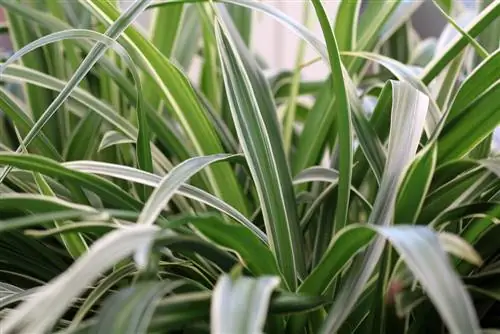
The spider plant is an extremely popular houseplant, which, thanks to its unusual growth habit, is ideal as a hanging plant for a hanging basket. It has numerous slightly curved and drooping leaves, which have a light central stripe. In addition, if cared for properly, the spider plant produces small white flowers all year round, as there is no specific flowering time. For this purpose, it is best used in a compost-based soil mixture and placed in a sunny to partially shaded location. The spider plant should be fertilized about every two to three weeks with a liquid fertilizer for potted plants and watered regularly. The compact houseplant has the following special features:
- Latin name: Chlorophytum comosum
- Synonyms: official palm, official grass
- Genus: Asparagus family (Asparagaceae)
- Growth height: 30-40 cm
- Growth habit: hanging basket, hanging
- Special features: Cats love to nibble on the leaves of the spider plant
Tip:
In the summer months, the plant can be placed on the balcony or terrace without hesitation.
rubber tree

The rubber tree came to Europe in the 19th century and is now considered a classic houseplant. If you choose this plant, you should be careful not to plant it in a pot that is too large. The rubber tree develops best when it has a little space. A commercially available compost-based soil mixture with a little peat is suitable as a substrate. The rubber tree feels most comfortable in a partially shaded to sunny location and should not be kept too moist. To promote the growth of the plant, it is recommended to fertilize it every two to three weeks with a liquid fertilizer. However, it should be noted that the rubber tree can reach an impressive height of several meters. However, it is possible to trim it without any problems because it forms new side shoots after it is shortened. In addition to the large, strong green leaves, the rubber tree also has the following characteristics:
- Latin name: Ficus Elastica
- Synonyms: rubber tree, para rubber tree
- Genus: Mulberry Family (Moraceae)
- Growth height: up to 3 meters
- Growth habit: tree-like
- Special features: in the wild it reaches a height of up to 40 meters
Dust often accumulates on the large leaves of the rubber tree, so it is advisable to wipe them off with a sponge every now and then.
Lance rosette
The lance rosette, which comes from South and Central America, is an extremely compact and easy-care houseplant that produces individual flowers from May to October. It prefers a bright location with direct sunlight, which is why a south-facing window is the ideal place for it. The lance rosette is best planted in a mixture of leaf mold, sharp sand and peat moss and fertilized about every three weeks. It should be watered moderately, allowing the surface to dry slightly between waterings. In particularly warm rooms, it is also advisable to spray the plant with lime-free water. The lance rosette also impresses with the following features:
- Latin name: Aechmea
- Synonyms: lance bromeliad
- Genus: Pineapple family (Bromeliaceae)
- Growth height: 40-50 cm
- Growth habit: sprawling
- Special features: loves high humidity
After flowering, the plant slowly dies, but produces new, small young plants. These are called Kindel and, as soon as they have formed roots, can be separated and used specifically.
Yucca
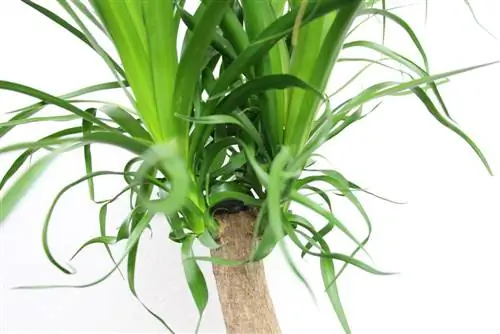
There are around 30 different species, with a distinction being made between stem-forming and stemless specimens. Although the yucca grows slowly, it can grow very tall and even reach the ceiling. It is therefore sometimes necessary to shorten them by sawing off the trunk with a fine-tooth saw. In order for the yucca to develop as best as possible, it should be placed in a bright location with sufficient sun. In any case, the substrate should be permeable; ideally, a compost-based soil mixture with a little added peat should be used. The yucca should be watered about once or twice a week and fertilized about every two weeks. The yucca also has the following properties:
- Latin name: Yucca
- Synonyms: palm lily, yucca palm
- Genus: Asparagus family (Asparagaceae)
- Growth height: 3 meters and higher
- Growth habit: tree-like
- Special features: can produce creamy white flowers, but is unlikely to be grown indoors
Tip:
The yucca contains saponins, but these are harmless to pets.
Conclusion
Even as a beginner, you can cultivate numerous decorative plants in your living space. Because there are numerous robust and easy-care specimens that forgive possible care mistakes. Whether tree-like plants like the elephant tree or more compact varieties like the lance rosette - there is the right plant for every taste - even for beginners!

